Dateline – May 2021 – Edwards Plateau
I love driving Texas rural highways. I love it. Texas is a beautiful state. The countryside. The rolling landscapes. The big blue skies. The houses and farms and buildings and small towns. There are stories to be noticed and considered everywhere you look. If you find the right laid-back, low-traffic farm to market road, on a day when the seasonal vegetation is vivid of color, with cool crisp air, and deep blue skies filled with puffball clouds, you can lose yourself in the zen of touring.
If you are like me, you also keep a sharp eye out for Texas wildlife. Backroad serendipity at 70 mph can produce fascination wildlife observations—if you keep your eyes peeled. Most of what you will see will be pedestrian. There’s no way around that. A Red-tailed Hawk on a utility pole. A Turkey Vulture soaring high overhead. But every so often you might get lucky and spy something truly unusual and unique.
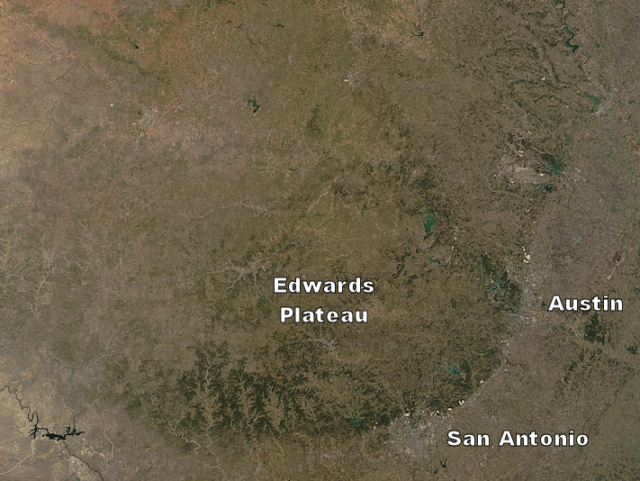
Image from Wikimedia
Case in point are these Blackbuck antelope observed on a recent road trip across the Edwards Plateau. Blackbucks, with their exotically spiraling horns and distinctively colored coats, are native to the Indian subcontinent in Asia. When I first spotted these obviously out-of-place antelopes I was certain I was driving past some kind of exotic wildlife ranch. And maybe I was. But when I got to a computer and did the requisite Google search I discovered that there was possibly a little bit more to the story.
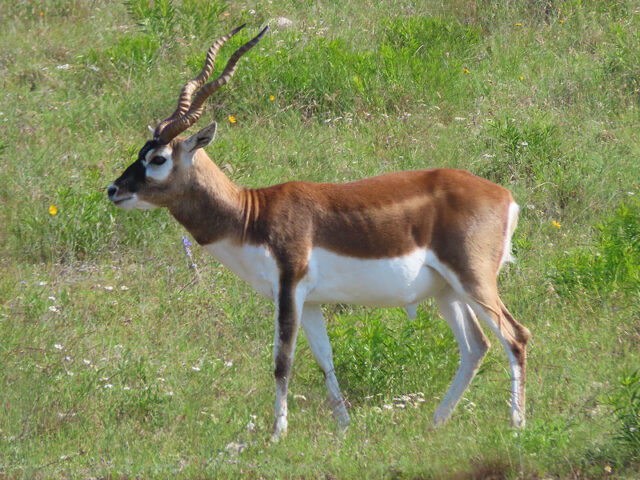
Here is how The Mammals of Texas Handbook describes the Blackbuck in Texas situation…
DISTRIBUTION. Native to India and Pakistan, blackbuck originally were released in Texas in the Edwards Plateau (Kerr County) in 1932. Today there are approximately 20,000 individuals living in the wild, but relatively few are found outside controlled areas.
HABITS. In India and Pakistan, blackbuck were once widespread in plains and open woodlands; wet coastal areas, western deserts, and northern mountains limited their distribution. Today, extensive hunting and habitat destruction have restricted blackbuck to only small, isolated populations in their former native habitat.
More than 80% of the blackbuck in Texas inhabit the Edwards Plateau region, where the patchwork of open grassland and brush provides both excellent forage and cover. Their range is restricted to the north and west by cold winters, to the south by coyote predation, and to the east by parasitism. Blackbuck prefer to graze on short to midlength grasses but also browse on common brush species. Forage selection is primarily determined by availability, with sedges, fall witchgrass, mesquite, and live oak commonly eaten. Forb use by blackbuck is low.
POPULATION STATUS. Introduced, common. This exotic is mostly found throughout the Hill Country and South Texas on managed high-fence ranches. Recently, there have been reports of free-ranging blackbuck populations being established in portions of these regions.
Texas Tech Natural Science Research Laboratory – Mammals of Texas
It seems probable that the antelopes in my photographs are part of a ranch-managed herd. But in this part of Texas it’s also possible—though maybe unlikely—that these were free-ranging Blackbuck antelope, and that’s pretty cool.
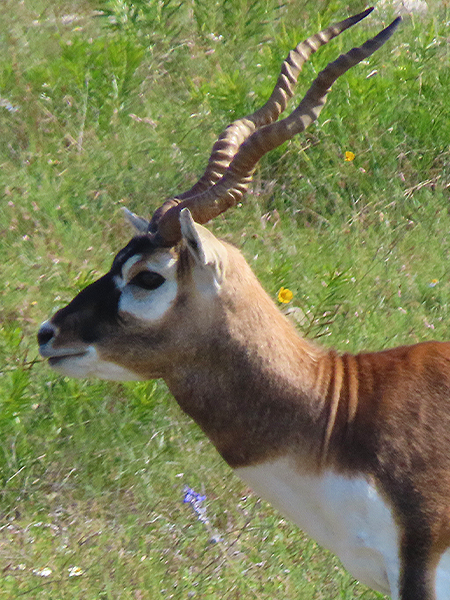
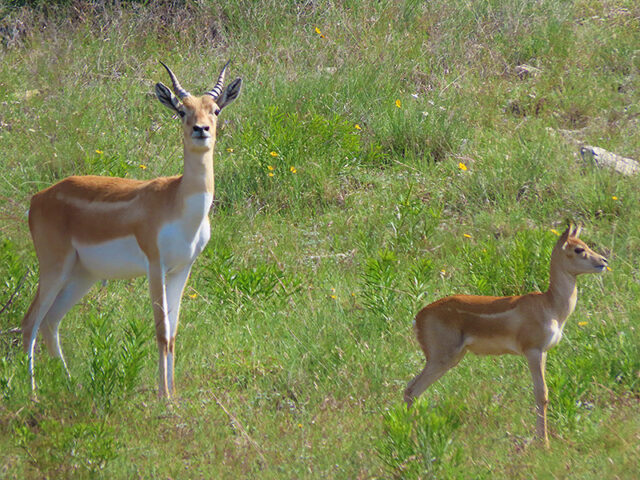
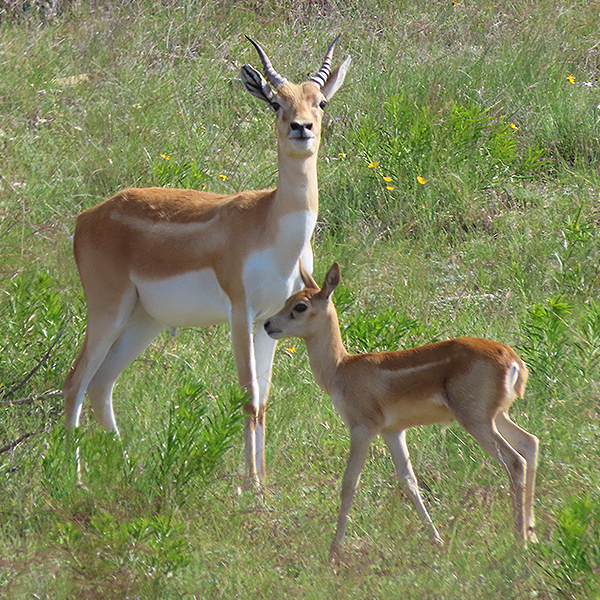
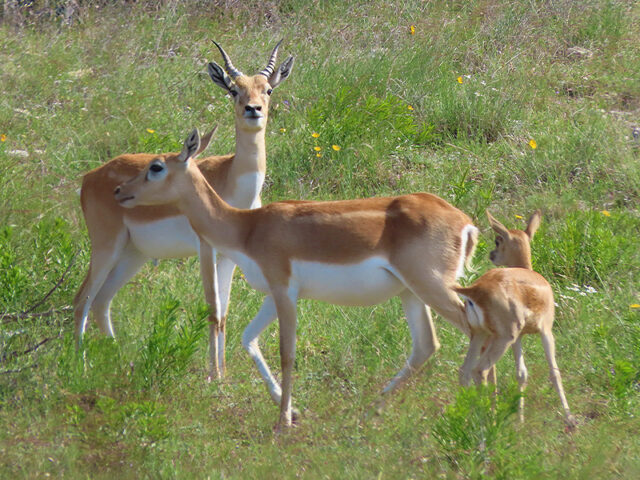
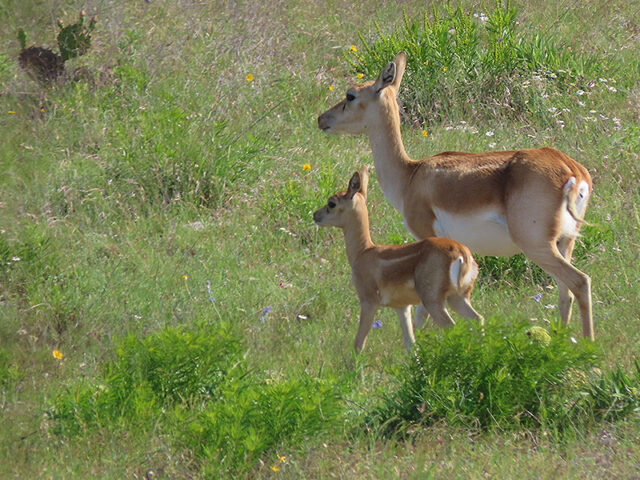
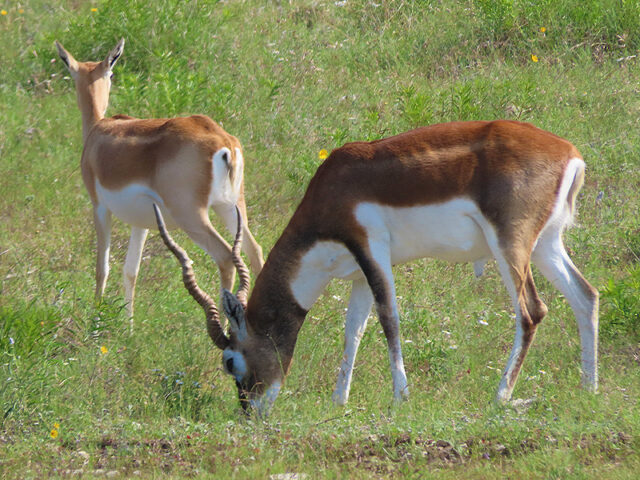

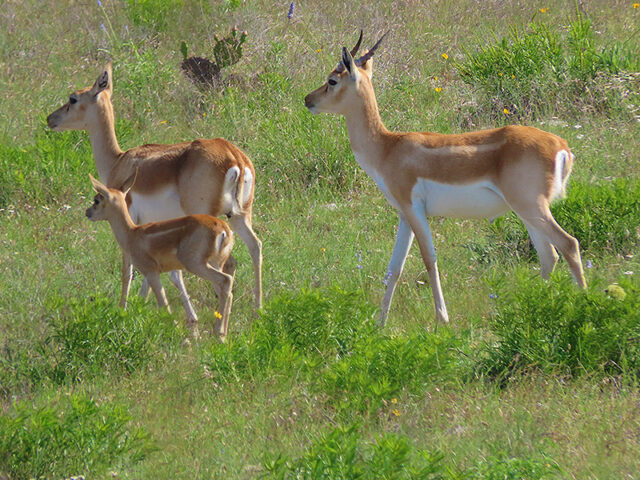


Hmmm… . Yes, it is a beautiful animal. But, rather than its presence being “pretty cool,” the blackbuck and other nonnative large mammals are occupying habitat, using resources that native wildlife should be using, while helping to spread parasites and diseases that infect the natives.. Though not the primary cause of the disappearance of pronghorn from the Edwards Plateau (they do still occur on the western portion of the plateau, but not in their former numbers), exotic wildlife have likely contributed. Habitat changes of course, mostly brought on by cattle, sheep, and goat ranching have been most significant.
The one caveat I have to my position is that if political and environmental conditions allow, perhaps Texas blackbuck could contribute to restoration of the species in southern Asia.
Hi David,
Thank you for your thoughts. It would take a lot to convince me that introducing non-native wildlife into a new ecosystem is a good idea. In all but the most exceptional cases it seems an extremely irresponsible thing to do. I would never advocate for it. But nobody asked me, and now it is water under the bridge as far as the Blackbuck is concerned. Like with so many invasive species, there does not appear to be the requisite will—or it is simply not practical—to address the issue effectively. Either way Blackbucks are likely here to stay. I’m typically not very interested in investing my energy in lamenting the presence of an invasive species when the situation is unlikely to change. Instead I prefer to focus on the individual animals. I always admire the individual’s ability to survive in the wild (and in the presence of people)—no matter how they happened to arrive in their current circumstance. Survival is not an easy thing, regardless of how well adapted an animal is. I root for the individual animals, and I am always excited to see them succeed. I also always feel extremely privileged just to get to observe the various kinds of wildlife that I happen across. Every single creature. I think it’s pretty cool. Blackbucks shouldn’t be here… but they are. I choose to look for what there is to appreciate about that happenstance rather than focusing on the opposite. I’m not willing to apply a blanket condemnation to animals that had no control over the situation they now find themselves in.
That’s my take, for what it’s worth.